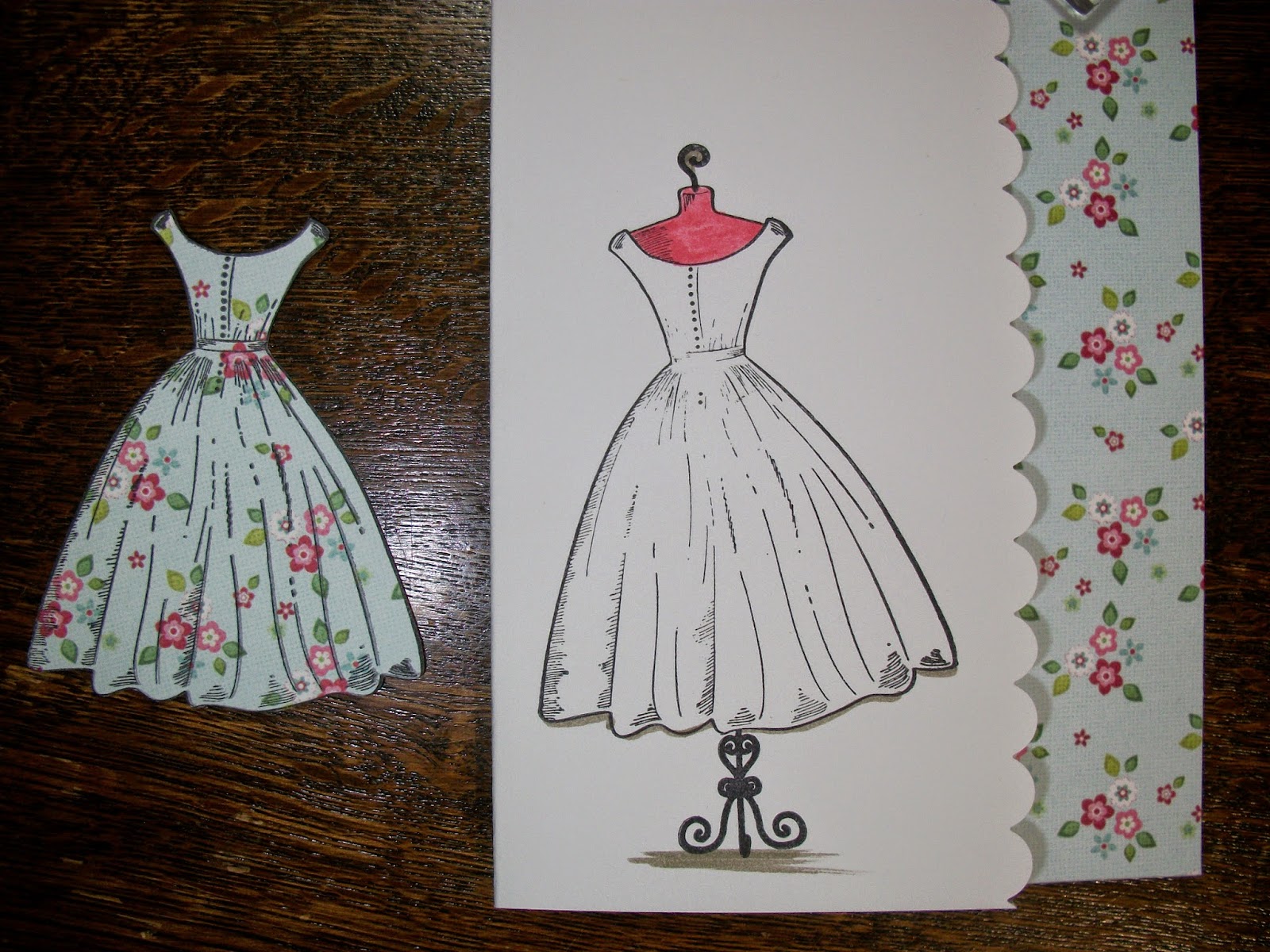Following on from last weeks tutorial on basic decoupage using pre-cut sheets, I wanted to share handmade decoupage. You can use any of your stamped images, (providing you can cut around it neatly) to create a layered decoupage image. You could also use an image from a digi kit in the same way by following the steps below, but simply printing out rather than stamping and colouring.
 |
| stamped and coloured |
Firstly, decide on how many layers you want to create. To do this, you need to look at the image and work out which sections would be in the foreground, which would be behind these and right at the back. It depends on your preferences and the image as to how many layers you need. The next stage is to stamp the image once for each layer. I then colour each image, making sure that all visible sections are coloured, including the edges of the lower layers which may be seen from the side. Obviously, you can leave the areas to be cut away, as you can see above.
 |
| cut out pieces |
I then carefully cut each of the layers out, as seen in the image above. Depending on your image, I would either use a scalpel or sharp scissors to do this. It is important that you don't forget to cut away any little landlocked areas of background in the image which would spoil the effect. If you don't cut the pieces accurately, the completed decoupage image wont line up properly. The final stage is to assemble your decoupage image with foam pads or silicone glue.
 |
| the decoupage image |
 |
| finished card with handmade decoupage |
I created the card above with this cute little decoupage image. I die cut an aperture out of the front of my card and backed it with acetate to create a window. I then glued my decoupage image onto the circle window and backed this with a carefully cut piece of card on the inside to hide the glue. I also added a piece of paper on the other half inside to create the blue background for the cut-out sections on the front.
 |
| inside view of card |
Mx






























